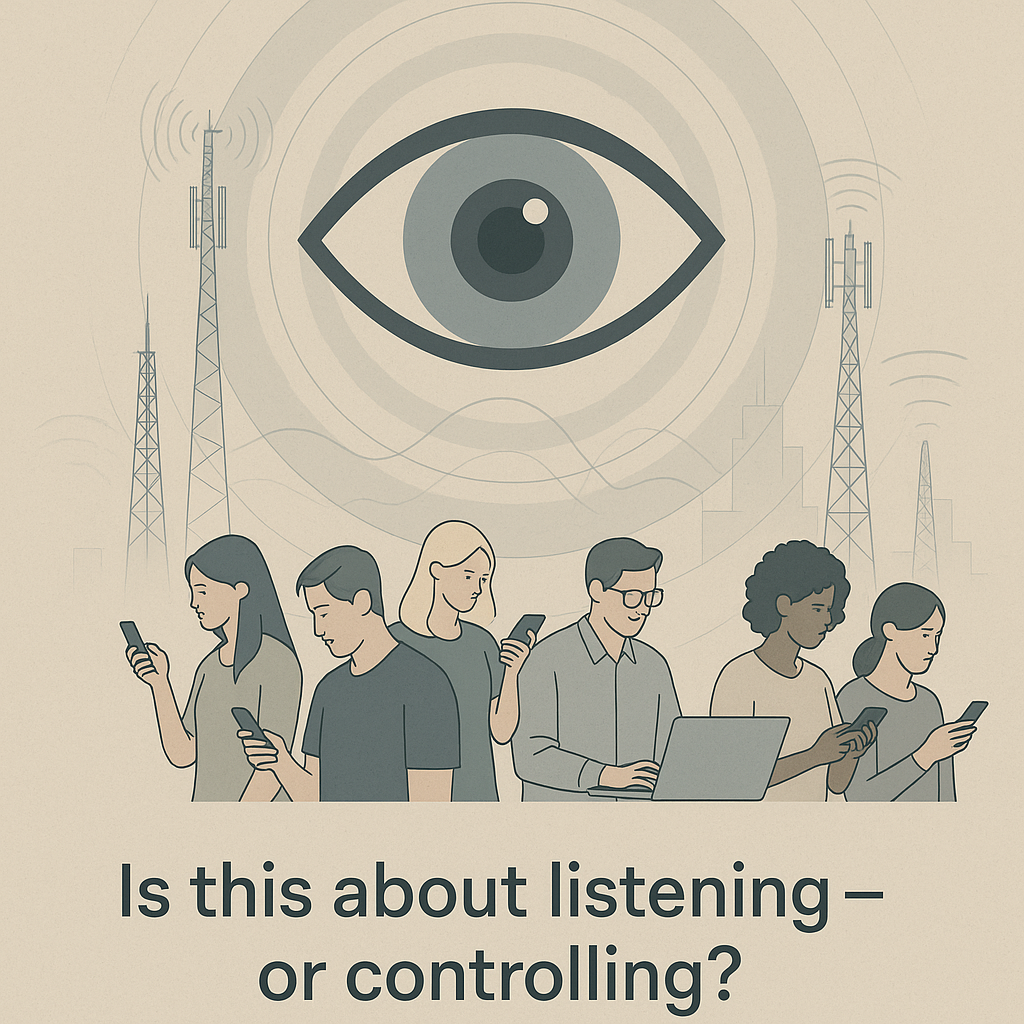The monitoring and control of public sentiment on EMFs is the focus of a recent study published in Applied Sciences (2025). It introduces an AI-based system to track public sentiment about electromagnetic radiation (EMR) on social platforms like Weibo. The technology is advanced. However, the study raises ethical concerns about surveillance, public trust, and the intent behind such monitoring systems.
The system’s goal seems less about understanding public concerns and more about managing emotional reactions. In particular, it targets negative sentiment linked to EMF infrastructure. Phrases like “curbing adverse development trends in public opinion” or “guiding sentiment through positive media engagement” suggest a deeper agenda. These terms hint at efforts to shape or suppress concern, rather than to engage with it meaningfully.

A visual commentary on the monitoring and control of public sentiment on EMFs
Image generated by AI using OpenAI’s DALL·E – conceptual design by EMFSA, 2025.
This approach risks turning genuine public concern about EMF exposure into a public relations issue—something to be tracked, minimized, and reframed, rather than confronted with open dialogue, scientific transparency, or independent health assessments. It reinforces a top-down model of governance where sentiment is something to be shaped and controlled, not respected or engaged.
Of particular concern is the suggestion that ongoing surveillance of public emotion should inform rollout strategies. While public consultation is mentioned, it’s treated as a tool for defusing resistance—not for empowering communities or incorporating public input into meaningful health or planning policy.
The monitoring and control of public sentiment on EMFs: is being used not to understand why people are concerned, but to ensure those concerns don’t interfere with infrastructure goals. This raises questions about public trust, informed consent, and the role of science and technology in a democratic society. If EMF concerns are growing, the solution isn’t to fine-tune sentiment metrics—it’s to ensure that scientific research, transparent communication, and real public participation are at the center of the conversation.
Acknowledging Harm, Prioritizing Control
Section 3.2.1 of the paper presents clear evidence of potential EMF-related health effects and questions around safety limits. Yet, the paper’s primary focus is not on addressing these risks, but on tracking, shaping, and controlling negative public opinion—despite acknowledgment that such technologies may cause harm.
Editor’s note: This post was created in collaboration with ChatGPT for editorial support. All ideas and conclusions are the author’s own.
Reference:
Wei, Q., Ling, X., & Hu, J. (2025). Quantification and Analysis of Group Sentiment in Electromagnetic Radiation Public Opinion Events. Applied Sciences, 15(9), 5209. https://doi.org/10.3390/app15095209
Explore: Access to Information in a Democracy
